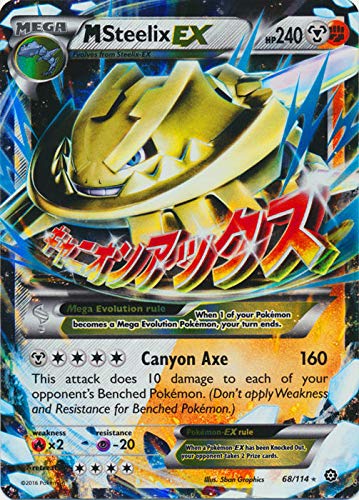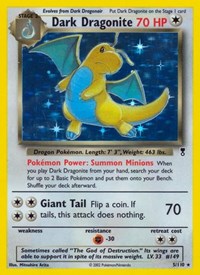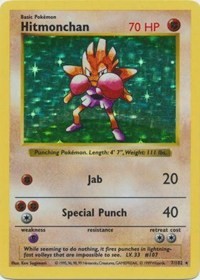How to Make Money Flipping Pokémon Cards
Pokémon cards are back in the spotlight, and the flip-for-profit market has never been busier. With rare cards fetching impressive sums and collectors hungry for new finds, it’s easier than ever for savvy fans to turn a hobby into real cash. Flipping Pokémon cards takes sharp eyes, patience, and a good sense of value.
On example, of someone making money by selling high end cards is Spencer (Scyther’s Kiss) on Instagram.
This guide is for anyone—from longtime fans to curious newcomers—ready to spot deals, avoid common mistakes, and build side income from Pokémon’s community.
Understanding the Pokémon Card Market
Flipping Pokémon cards means knowing what sells and why. Not all cards are created equal. Some can jump in value overnight, while others stay flat for years. If you’re serious about making money, you need to learn what puts certain cards in high demand and how to spot opportunities before the market moves. Let’s break down what makes a card valuable, how to spot trends, and how card condition sets the price.
Disclosure: our content is reader-supported, which means we may earn commissions from links at no cost to you.
Key Factors That Determine Card Value
There are several features collectors look at when deciding what a card is worth. Pay attention to these elements when you’re scouting—or selling—Pokémon cards:
- Rarity: Each Pokémon card set prints cards in different rarity types. Common cards show up in almost every pack, while rare, super rare, and secret rare cards are much harder to pull. Look for rarity symbols (circle, diamond, star) in the lower corner of the card.
- Holographic vs. Non-holo: Holo cards have a shiny, foil background behind the artwork. Non-holos have no shiny layer. Generally, holos are more desirable, especially older ones.
- Set Symbols: Each set in Pokémon has a tiny symbol on the card, usually in the lower right corner. The base set, Jungle, Fossil, and others each have their own icon. First edition cards from early sets are famously collectible.
- First Edition: These cards have a small “First Edition” stamp. They were only printed in the first run of a set. First edition versions usually sell for much more than unlimited ones.
- Shadowless: Early versions of the base set are “shadowless,” meaning there’s no drop shadow on the right of the picture box. Shadowless cards are rarer and fetch higher prices.
- Iconic Pokémon: Some Pokémon are always in demand, like Charizard, Pikachu, and Mewtwo. Cards featuring these favorites, especially their first or rare appearances, keep value year after year.
A card that checks several of these boxes (say, a First Edition, Shadowless, Holographic Charizard) is the gold standard for flippers and collectors.
Recognizing Trending Cards and Market Cycles
Making money with Pokémon cards means staying one step ahead of the crowd. Trends shift fast, driven by everything from celebrity interest to game updates. You can spot hot cards and smart flips by tuning in to these sources and signals:
- Online Marketplaces and Forums: Sites like eBay, TCGPlayer, Reddit’s r/pkmntcgtrades, and Discord groups can show you what’s moving and what’s cooling off.
- Price Tracking Tools: Use apps and tools like Pokécon and eBay Sold Listings to monitor price swings and volume of sales over time.
- Pop Culture Influences: When a card shows up in a streamer’s collection, a popular YouTube video, or a new movie, prices often spike on related cards.
- Gameplay Changes: New sets, rule updates, or competitive play can impact which cards are playable or desired.
- Seasonal Patterns: The market tends to heat up around holidays, new set releases, or anniversary events. Plan buys and sales around these cycles.
Watch for sudden spikes but remember that hype can fade fast. Consistent, slow gains usually mean a card has staying power, while unexpected jumps can mean a bubble about to burst.
How to Analyze Card Condition and Grading
Even if you pull a rare card, its condition sets the final price. Collectors want cards that look brand new. Small flaws can cut a card’s value fast, so get comfortable with grading basics:
When checking a card’s condition, focus on:
- Surface: Look for scratches, print lines, and stains.
- Corners: Crisp, sharp corners earn top grades. Blunt, nicked, or bent corners lower the score.
- Edges: Clean edges matter. Whitening or dings dock points.
- Centering: The printed image should be centered. Off-center cards, with borders uneven from top to bottom or side to side, are less valuable.
Professional grading companies give cards a score based on these factors:
- The big names in grading are PSA (Professional Sports Authenticator), BGS (Beckett Grading Services), and CGC (Certified Guaranty Company).
- They grade on a scale from 1 (poor) to 10 (gem mint).
- Higher grades mean much higher selling prices. A mint condition card can sell for five or ten times more than the same card in played condition.
If you’re serious about flipping, learn to evaluate raw cards quickly and accurately. Consider getting high-value cards graded for bigger profits and more trust with buyers.
Finding and Sourcing Profitable Pokémon Cards
When it comes to making money flipping Pokémon cards, knowing where and how to find good cards is just as important as knowing what they’re worth. Sourcing profitable cards means staying sharp, getting creative, and being ready to act when opportunities show up. Whether you’re pulling sealed packs from store shelves or unboxing vintage gems at a local auction, each source offers different risks and rewards. Let’s look at where smart flippers start their hunt, how to spot real deals, and why plugging into the community can lead to your next big find.
My Current Most Valuable Cards
Where to Buy Pokémon Cards for Flipping
Variety and timing are key for finding valuable cards at the right price. Think bigger than just your local big box store and keep these sources on your radar:
- Retail Stores: Large chains like Walmart, Target, and even some grocery stores restock Pokémon cards regularly. New sets can be resold quickly, but cards fly off shelves fast. Ask employees when shipments come in and be there early for your best shot.
- Online Marketplaces: TCGPlayer and Ebay are the online headquarters for sealed products, singles, and even job lots. You can also check Mercari, Facebook Marketplace, and OfferUp for local sellers and bulk deals. Always review seller ratings and item descriptions closely.
- Local Card Shops: Your town may have independently owned stores that buy, sell, and trade. Shop owners sometimes offer discounts on bulk, organize trade nights, or hold in-store tournaments with bonus packs for prizing.
- Garage Sales and Flea Markets: These are goldmines for used Pokémon cards. People clearing out old collections may not know what they have, leading to huge scores on sealed products or forgotten rare cards at low prices. Always check condition carefully.
- Auctions: Local auction houses, estate sales, and even online auctions (like Goodwill’s auction site) can turn up huge collections at bargain prices if you know how to spot undervalued listings. Look for lots with fuzzy photos or vague descriptions—many people skip these, but they can hide treasures.
- Toy and Comic Conventions: Vendor halls at local conventions often include card sellers. Conventions are excellent for networking, scouting deals, and buying from reputable dealers who want return business.
Mixing up your buying strategy gives you a better shot at landing profitable finds and helps reduce risk if one source dries up.
Expert Tip: Try to get new bundle shipments off the shelf as soon as they are released. They go fast! And with good reason, its more likely to find high end cards there.
Spotting Deals and Avoiding Fakes
With big money in the hobby, counterfeits and overpriced duds are everywhere. Learning how to spot winners is a must if you want to avoid losses.
- Identifying Genuine Cards:
- Check the Print Quality: Real Pokémon cards use specific colors, materials, and a precise printing process. Hold a card up to the light; authentic cards have a consistent opacity and a distinct blue border. Fakes often look washed out or feel wrong.
- Look for the “Light Test”: Real cards have a thin black middle layer that appears when you shine a flashlight through the edge. No black line usually means a fake.
- Feel the Texture: Pokémon cards have a certain stiffness and slip. Thin, flimsy, or rubbery feeling cards are likely counterfeit.
- Spotting Undervalued Deals:
- Research Sold Prices: Use eBay’s Sold Listings or TCGPlayer’s market price tool to see recent sale prices for any card or set before you buy.
- Look for Bulk Listings: Sometimes sellers lump valuable cards into a stack or binder and underprice the entire lot. Scan bulk listings for hidden gems.
- Pay Attention to Typos or Odd Listings: Misspelled card names or vague pictures can scare off other buyers and give you a chance to score.
- Avoiding Common Scams:
- Deal Locally When Buying Large Collections: Meet in public and check everything before you pay.
- Check Seller Feedback: High feedback and a history of trading cards mean less risk.
- Don’t Send Money Friends-and-Family unless You Trust the Seller: Stick with secure payment methods that offer buyer protection.
Practice examining cards often. Over time, your eye for detail and deal-spotting instincts will get stronger.
Networking with Collectors and Community Resources
Pokémon card flipping is much more social than people think. Building relationships with other collectors opens doors to private deals, trading opportunities, market insights, and so much more.
- Online Communities and Forums:
- Platforms like Reddit’s r/pkmntcgtrades, Discord groups, and Facebook Groups connect you to thousands of collectors and sellers. You can find real-time market information, trade opportunities, and buy directly from other hobbyists.
- Many groups post exclusive deals, alert members to restocks, or host group buys on new products.
- Local Events and Trade Nights:
- Card shops run weekly trade nights, tournaments, and release events. These gatherings are perfect places to meet serious flippers and collectors, trade for needed cards, and get tips on local sourcing.
- Building your reputation in person can lead to regulars offering you first dibs on their extras or rare cards.
- Collector Meetups and Conventions:
- Larger events draw in sellers from far and wide and often include buyers looking to make bulk deals at lower prices.
- Bring your extra cards or cash because you might land a deal simply by being one of the first at the table.
Being part of the community isn’t just about having fun or finding better prices. It’s also the best way to learn about trends as they happen, avoid bad deals, and stay informed about what’s coming next in the hobby.
A strong network, sharp instincts, and a willingness to go beyond the obvious sources will help keep a steady stream of profitable Pokémon cards flowing your way.
Maximizing Card Value Before the Sale
Protecting and presenting your Pokémon cards in top shape makes a huge difference in profits. Cards in perfect shape always draw more attention and bigger offers. Before you list your cards for sale, invest some time in cleaning, safe storage, and sharp presentation. Every step you take to boost a card’s preserved condition gives buyers more confidence and helps you stand out from sellers who skip these details.
Cleaning, Protecting, and Storing Cards Properly
Maintaining your cards is a mix of care and caution. Simple steps keep value high and prevent costly mistakes:
- Handle With Clean Hands
Wash and dry your hands before touching any card. Oils and dirt from fingers can leave smudges or marks that lower value. - Card Sleeves and Top-Loaders
Always sleeve every card worth more than a few dollars. Use penny sleeves for the first layer, then slide the sleeved card into a rigid top-loader for extra strength.- Penny sleeves: Thin, soft sleeves that protect the card’s surface.
- Top-loaders: Tough plastic cases that guard against bends and drops.
- Avoid Overhandling
Pick up cards by the edges. Never press on the art side. Rubs, scratches or flexing can all hurt resale prices. - Proper Storage Environments
Keep your collection in a cool, dry spot. Moisture, sunlight, and big shifts in temperature lead to warped or faded cards.- Humidity: Store cards around 40-50% humidity, away from basements or attics.
- Temperature: Room temp works fine. Avoid any area that gets hot.
- Sunlight: UV light will fade colors. Store cards in boxes or closets, out of direct light.
- Shoeboxes Are Not Enough
Use storage boxes made for trading cards. Many have snug rows that keep cards upright and separate.
Over time, these habits pay off. Cards kept in perfect shape hold their value and attract serious buyers. Your future self will thank you.
When and How to Get Cards Professionally Graded
Grading is one of the smartest ways to raise a card’s selling price, but it isn’t free. Knowing when and how to grade your cards keeps you from wasting money and gets you the most back at sale time.
The Grading Process
- Pick the Right Cards
Only submit cards that are already in great shape, are rare, or are consistently selling for high prices once graded.
Good choices include vintage holos, first edition runs, or popular cards like Charizard. - Choose a Grading Company
The most trusted companies are PSA, Beckett (BGS), and CGC. Each has its own process, prices, and wait times, but all are recognized by seasoned collectors. - Prepare Your Cards
Clean each card gently with an air blower or microfiber cloth. Place in a new penny sleeve and a fresh card saver. Avoid wiping cards hard or using any liquid. - Fill Out Submission Forms
Each company has online forms to start your submission. You’ll describe the card, set insurance values, and select a service level. - Ship Your Cards Securely
Package securely: cards in sleeves, then top-loaders or card savers, then plenty of padding in a box. Include your paperwork.
Grading Costs and Timelines
- Standard rates fall between $18–$30 per card for basic service. Bulk deals exist for larger groups.
- Premium/express can cost over $100 per card but have faster turnarounds.
- Wait times range from a few weeks to several months based on demand and service selected.
Is Grading Worth It? A Quick Cost-Benefit Look
Grading adds value if the card is likely to score high (usually PSA 8-10 or BGS 8.5-10). Mint, rare cards can double or triple in value with a top grade.
- For cards worth under $50 raw, grading rarely pays off after fees.
- For cards with major flaws, grading can sometimes lower trust unless you want them authenticated.
As a rule, research recent sales of graded cards before deciding. Sometimes, the difference is huge. Other times, it’s best to sell raw.
Preparing Photos and Descriptions for Listings
Once your card is clean and protected, the next step is presenting it so buyers see its true value. Investing a little extra time here can mean the difference between a quick sale and a card that sits for weeks.
Taking Great Photos
- Use Natural Light
Shoot photos near a window or in soft daylight. Overhead lighting often causes glare and dull colors. - Neutral Backgrounds
Place the card on a plain background (white or gray work well). Busy patterns distract from the card. - Show All Angles
Take separate photos of the front, back, and corners. Buyers want proof of condition. - Focus and Clarity
Make sure the photos are sharp and not blurry. Use a phone’s macro mode for close-ups. - Avoid Filters
Show the card as it really is. Don’t use editing software to change color or brightness.
Writing Honest Descriptions
- Be Direct About Condition
List any scratches, edge wear, or bends, even if small. Overstating condition leads to returns and hurts your reputation. - Mention Key Details
Include the card’s set, number, and any special qualities. If graded, specify the company and grade. - Be Transparent
Say whether your card has been cleaned or if it’s straight from a pack. - Build Trust
Mention how you store cards and protect them. Use phrases like “stored in a smoke-free home,” or “kept in sleeves since pull.”
Buyers can spot when a seller cares about quality. The best photos and honest descriptions turn a listing into a smooth sale. With these habits, you’ll quickly stand out as a trusted Pokémon card seller.
Selling Strategies to Maximize Profits
Getting the most cash when flipping Pokémon cards comes down to selling smart. The best sellers pick the right place to list their cards, know how to show them off, and protect their own good name. This section breaks down the key strategies to put you in front of the right buyers, make sure your listings get clicks, and help you seal deals that keep profits moving up.
Choosing the Right Sales Platform
Where you sell plays a big role in both profits and hassle. Each platform attracts different buyers, fees, and risks. Knowing the upsides and downsides helps you match your card—and your style—to the best fit.
- eBay
- Pros: Huge audience, buyer and seller protection, strong demand for all types of cards, easy to check card prices.
- Cons: Sales fees (about 13% for most categories), can be slow for less popular cards, risk of payment holds for new sellers.
- TCGPlayer
- Pros: Built for trading cards, lots of buyers, clear price history, streamlined shipping after a sale.
- Cons: Lower demand for very rare or high-end cards, fees similar to eBay, can be slow to approve new sellers.
- Facebook Groups
- Pros: No seller fees, direct contact with buyers, active groups for local and national markets, flexible on what and how you sell.
- Cons: No formal buyer protection, scams can happen, buyers may take longer to pay or negotiate more aggressively.
- Instagram
- Pros: Great for showing off cards, building a personal brand, direct sales through DMs, especially good for unique or graded cards.
- Cons: Must build an audience to sell quickly, no built-in payment or shipping tools, risk of non-payment if trust is low.
- Local Meetups
- Pros: Cash sales, no shipping risks, easy for big lots or quick flips, build face-to-face trust.
- Cons: Limited by your area, safety concerns, time spent scheduling and meeting, less buyer protection.
Pick your platform based on how fast you want to sell, how much you’re willing to pay in fees, and if you’re comfortable shipping valuable cards. Many sellers use several platforms at once to reach more buyers.
Creating Listings That Convert
A strong listing is like a storefront window—the better it looks, the quicker it sells. Small moves pay off big here, especially if you focus on buyer trust and clear information.
SEO for Titles
Buyers search the same keywords over and over, so writing a title that matches their search makes your card easier to find.
- Include the card name, set, card number, rarity, and condition.
- Stick to common abbreviations (like “NM” for Near Mint).
- Leave out extra words and keep titles simple but clear.
Honest Descriptions
Don’t shy away from a card’s flaws, but highlight the good too.
- Share any dings, scratches, whitening, or bends.
- Mention sleeving and storage methods—this shows care.
- If graded, include the grading company and score.
Clear Photos
Photos sell the card before your description does.
- Use bright, even lighting (natural light is best).
- Take shots of the front, back, edges, and any flaws.
- Avoid filters. Keep backgrounds plain.
- Crop tightly so the card fills most of the frame.
Responding to Buyer Inquiries
Quick, polite replies build trust and push deals to the finish line.
- Answer all questions within a few hours if possible.
- Share extra photos or details when asked.
- Be upfront about shipping times and policies.
The best listings don’t just get more offers—they also lead to better feedback, fewer returns, and more repeat buyers.
Negotiation and Maintaining Reputation
Negotiation is common in the world of card sales. Sellers who stand firm but friendly win more often, and they build reputations buyers seek out.
Strategies for Negotiation
- Set your price with some room to drop, but know your lowest number ahead of time.
- Politely decline offers that are too low, but stay open to counter-offers.
- Bundle cards for a discount—buyers like deals, and you move more inventory.
- Stay positive, even if buyers are pushy.
Handling Lowball Offers
- Respond with your counter-offer or a simple, “Thanks, but I can’t go that low.”
- Don’t feel pressured to accept just to make a sale; wait for real buyers who value your cards.
Shipping Best Practices
The mail is where most sales go wrong, but you can make it smooth:
- Always use tracking, even for cheaper cards.
- Waterproof packaging with a team bag or plastic wrap, then a bubble mailer or box.
- For cards over $100, use signature confirmation.
- Ship within 1-2 days of payment.
The Importance of Positive Feedback
A seller with great feedback gets more offers, quicker sales, and repeat buyers.
- Ask happy buyers to leave feedback.
- Fix problems fast if they come up—replace cards lost in the mail, accept returns when reasonable, and never let an issue drag on.
- Stay polite, even in tough talks. A bad review lives forever, but handling it well can bring buyers back.
Treat every deal like the start of a business relationship, and you’ll see word-of-mouth help you flip cards faster—and at higher prices.
Get Started!
Making money flipping Pokémon cards hinges on smart buying, careful handling, and honest selling. You don’t need to chase every hype wave—steady research, clear communication, and ethical deals lead to long-term wins.
Stay curious and keep learning as the market shifts. Connect with other collectors, ask for advice, and share your own tips—it helps everyone grow. If you treat every buyer and seller with respect, your reputation will unlock even better deals.
Success here is built on patience, clarity, and community. If you’re ready to adapt and stick to proven methods, your hustle can turn Pokémon cards into real profit. Thanks for reading—drop your favorite card flip story in the comments!




One response
[…] How to Make Money Flipping Pokémon Cards […]